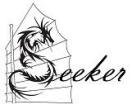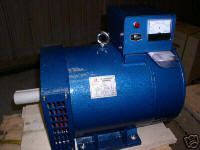Electrical
Solar
Here is a good summary and idea for all 220 volt AC, or 110 for
us:
"Cost of solar cells, on their own, is about 3-6 $/watt. A single
150w cell is 450$ or so. Ten are 4500$. You need a charger ie
electronic controller (500-1000), cables (500-1000) and appropriate
batteries (10x8D).
The cable MUST be thick, as its DC, thats why they are not cheap.
The cheapest marine deep-cycle batteries or AGMs are about 400-500$
each. 10 x 450$=4500$.
Total cost is about 12-14.000$ if you install everything
yourself, and buy everything at rock-bottom prices. The work will be
about 100 hours. Now, for me, myself, this is exactly what I will
buy/install. And I plan to spend, if I must, about 15.000$ at it. I
suspect that in 1-2 years the system cost will be about half, as
batteries are getting cheaper and so are the solar cells.
Because I want to have house loads available for 5 days without
running a generator. This needs about 10-15 solar cells of about
150w nominal, for about 1000w real continuous power. It needs about
12-15 square meters of area. I will put mine on the pilothouse roof.
The 2000w nominal gives you grid independence, You can live with a
fridge and pc almost not running a generator/motor.
And I will have 220v, 50hz throughout, nothing and I mean nothing
will run on DC. It far cheaper, far more reliable, less corrosive,
more efficient etc. etc. etc. Cable losses account for about 20% of
your consumption in DC and under 1% in AC 220v. Because you first
have to generate the DC, you first lose 20% then lose
is again when using it. So, you are wasting about 40% of your
electricity in heating the cable with DC! DC cables cost about 4-5
times more than ac (as they must be thicker). Also, all appliances
and tools are far more reliable when meant for industrial and house
use and running at 220 V, 50hz. For example, a house freshwater
(pressure) pump will run 10-20 years and costs under 1000$. Same for
cooking etc. etc. An energy efficient house refrigerator will be
about the same efficiency as the best DC system you can have custom
built. It costs 500$ vs about $5000 for the best custom stuff. Its
about 5-10x more reliable, and you can buy a new fridge anywhere in
the world for $500. You can make/build a custom enclosure if you
want. Wood, granite, stainless, whatever. I will. Just make sure its
easy to disassemble (don't glue the pieces). All of the above
is based on a live aboard, like a trawler yacht, with standard house
conveniences like fridge, shower pressure water, pc or laptop etc."
Power Needs Inventory
| |
AC
Voltage |
AC
Amps |
AC
Watts |
DC
Voltage |
DC
Amps |
DC
Watts |
| Air Compressor 5 HP, 18.1 CFM @ 90
PSI |
230 |
30 |
6,900 |
|
|
|
| Plasma Cutter - Hypertherm
Powermax1000 |
230 |
44 |
10,120 |
|
|
|
| Plasma Table |
110 |
10 |
1,100 |
|
|
|
| AC Peek Watts |
|
|
18,120 |
|
|
|
| Welder (V300 Inverter) |
240 |
43 |
10,320 |
|
|
|
| Computers |
|
|
|
|
|
|
| ROV Plasma Monitors |
|
|
|
|
|
|
| Washing Machine |
|
|
|
|
|
|
| Ice Maker - Edgestar,
28 pounds/day |
115 |
3.48 |
400 |
|
|
|
| Water Maker |
|
|
|
|
|
|
| Refrigeration |
|
|
|
|
|
|
| Fans |
|
|
|
|
|
|
|
DC Motors
Easy to control speed
Controlling the speed of a brushed DC motor is simple. The higher
the armature voltage, the faster the rotation. This relationship is
linear to the motor's maximum speed.
The maximum armature voltage which corresponds to a motor's rated
speed (these motors are usually given a rated speed and a maximum
speed, such as 1750/2000 rpm) are available in certain standard
voltages, which roughly increase in conjuntion with horsepower.
Thus, the smallest industrial motors are rated 90 VDC and 180 VDC.
Larger units are rated at 250 VDC and sometimes higher.
Specialty motors for use in mobile applications are rated 12, 24,
or 48 VDC. Other tiny motors may be rated 5 VDC.
Most industrial DC motors will operate reliably over a speed
range of about 20:1 -- down to about 5-7% of base speed. This is
much better performance than the comparible AC motor. This is partly
due to the simplicity of control, but is also partly due to the fact
that most industrial DC motors are designed with variable speed
operation in mind, and have added heat dissipation features which
allow lower operating speeds.
Easy to control torque
In a brushed DC motor, torque control is also simple, since output
torque is proportional to current. If you limit the current, you
have just limited the torque which the motor can achieve. This makes
this motor ideal for delicate applications such as textile
manufacturing. ---
http://www.oddparts.com/acsi/motortut.htmInvertor
An inverter converts DC
to AC. There is approx. a 5 to
10% energy loss converting from DC into AC.
http://www.majorpower.com/inverters/majorinverter_3phase.html
Rectifier
A rectifier converts AC to DC.
DC to DC converter
A DC to DC converter steps down DC voltage, for example from say
120v to 12v.
Battery Chargers
Forklift battery chargers come in both 1 and 3 phase with common
outputs of 12, 24, 36 and 48 volts. A 48 VDC, 153 Amp output
charger can be purchased used for about $300.
Generator Heads
Chinese made generator heads are available on eBay from Bill
Osborne, akakwo2@hotmail.com,
in Milledgeville, GA. The 20KW 3 phase is $570 and 30KW 3
phase 120/240 is $980. (Feb 2009) Both heads need to turn at 1800
RPM, the 20KW head requires 29 HP and 30KW head requires 43
HP.
"Depending on what engine you use, you can use an electronic
governor or have to go with a mechanical. Some guys use a lister
engine (old style diesel) with a mechanical and works very well.
Others go on the high end and use a big engine and use an electronic
one. Some things to know about this when setting up: get a
Kill-A-Watt meter and use it to set the frequency to 62Hz (equates
to 1860RPM) under no load. This way when the unit is at max load,
the frequency will go down to about 58-59Hz. Any item in a house can
use this and will not hurt anything." --Bill
Wind Generator
Alternators - The biggest problem with using car alternators for
wind power is that they are designed to rotate at too high a speed
to be practical in wind power applications without significant
modifications. Even a small, seemingly fast windmill might do most
of its work at 600 rpm, not nearly fast enough for a car or truck
alternator. This means that gearing up with pulleys or other methods
is needed, so lots of power is lost to friction--a big problem with
wind or water power, but not a problem with a gasoline engine.
Our experiments have consistantly shown that homemade PM
alternators are the most powerful and cost-effective solution for
building a wind generator. Their low-rpm performance is excellent,
and at high speeds they can really crank out the amps thanks to
their efficiency. Our more recent PM alternators have been based on
Volvo disc brake assemblies, which are very sturdy and have thrust
bearings built into the unit. Our larger units are "Disc" or "Axial"
designs...a flat plate of magnets rotating next to a flat plate of
coils. Our smaller PM alternators are "Radial" designs, where the
magnets are fastened to the outside radius of the armature. Since
all alternators produce AC, the output must be converted to DC with
bridge rectifiers for battery charging.
Our designs to date have been single phase for ease of
construction. Three-phase alternators have some advantages (they are
somewhat more efficient, and make better use of available space),
but they are somewhat more difficult to build.
With a 7 ft diameter prop, (Wind) our Volvo brake designs can put
more than 60 amps into a 12 volt battery in a 30-mph breeze--that's
about 700 watts. We've seen the Volvo design peak at over 100 amps
during high winds! This gives these homebrew designs a big advantage
over similar-sized converted induction motors, which become
inefficent quickly and top out at 20-25 amps output with a 7 ft.
diameter prop. --www.otherpower.com
Low-RPM Disk Alternator
http://www.otherpower.com/wardalt.html
Axial flux windmill plans ---http://www.scoraigwind.com/
Low Cost - Tread Mill Motor
www.thekevdog.com/projects/wind_generator/
Auto Pilots
http://www.yachtworks.net/Store/Autopilots.htm
LED Lighting
...parallel them and use however many you want. Please note that
you
shouldn't just parallel the LEDs themselves, since the
slightly-variant
voltage drop across them would just cause them to burn out one after
another; instead, connect each LED in series with the appropriate
resistor (i.e., max current of 20mA at max voltage - say, 14.4v
while
you're running your engine - works out to (14.4-3.2)/.020=560 ohms),
then parallel all your LED/resistor sets, as many as you'd like:
______
______
+12v | |
z z
z 560 z 560
z z
| |
V LED V LED
_ _
Gnd | |
------ ------ ...
Also, I wouldn't rely on just the regulator to block spikes; their
response time isn't all that good. Put a couple of capacitors - say,
a
.001µF and a 1µF tantalum with at least a 50V rating - across the
regulator input; that should protect both it and the LEDs.
--Ben Okopnik
|

